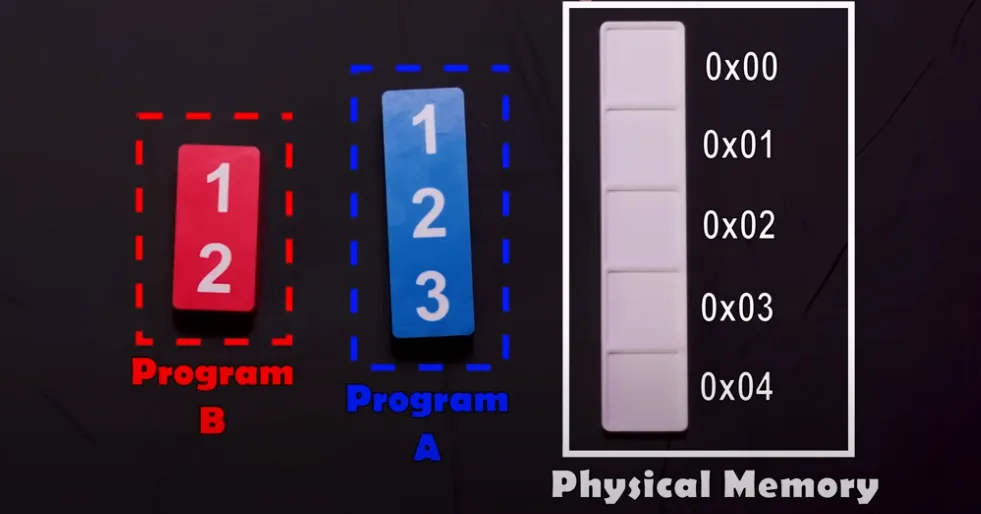In the early days of computing, memory was a limited and valuable resource. Computers used magnetic core memory, which required careful management. Each program had to know exactly where to store and retrieve its data in memory. This led to several issues:
Rigidity and Complexity: Programs had to specify exact memory addresses, which was complicated and error-prone.Risk of Overlap: If not carefully managed, one program could overwrite the memory space of another, leading to errors.
Visualize…
Let’s visualize memory allocation. Program A's memory is represented by blue blocks, while Program B's memory is represented by red blocks. The white tray illustrates the currently empty physical memory.

Let’s say program A is ready to start and is about to get loaded into memory. Before we had operating systems handle it for us, program themselves defined their starting addresses. Lets say the persom who programmed program A, decided to start at memory address 0x01.

The memory is mapped to phyiscal memory just fine. And the program proceeds as normal.
But now program B wants to start and epxecting a contagious block of memory at memory addresses 0x01 and 0x02.

Although there is physical memory available to hold Program B without overlapping with Program A, we lack two contiguous blocks of memory. This is because the developers of Program A and Program B did not coordinate to ensure non-overlapping memory spaces.
In the early era of computing, managing memory was entirely up to the programmer. To be efficient, you had to coordinate with all other programs potentially running on the system to ensure that your starting and ending memory addresses did not overlap or override others.

